Page 1 of 1
Chama Oil Dock

Posted:
Fri Feb 10, 2012 2:10 pmby Russ Wood
I am a railfan and a modeler. As a modeler I enjoy building accurate models of real world structures. On the NGDiscussion group there has a been a wealth of great pix posted over the years. Sometines finding those gems is a bit of a challenge. So my thought was that I would find some of these gems and repost them here so that they are a little more accessible. The first couple would be of the Chama Oil Dock. Depending on comments both good and bad, I will then do some others as they become available. Russ
Posted by: Erik Priess 1/21/2011
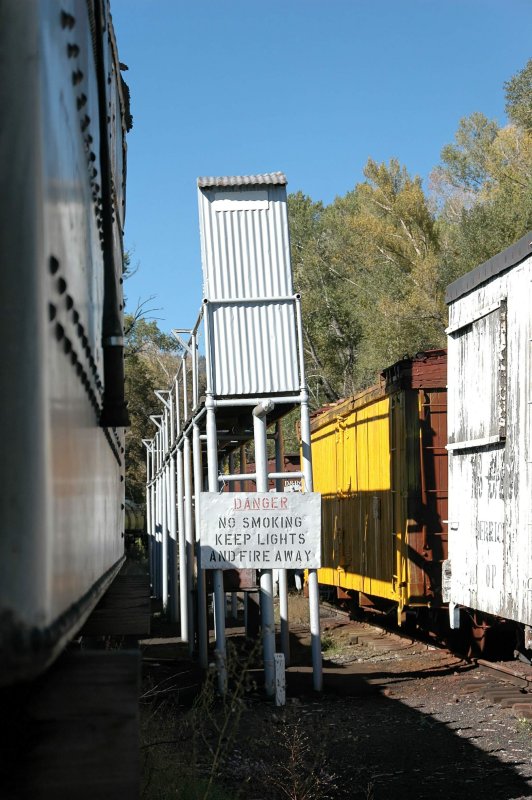
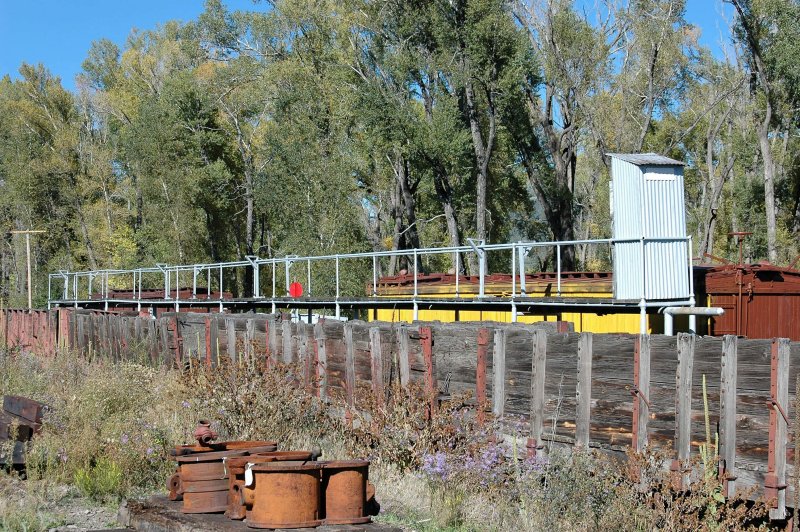
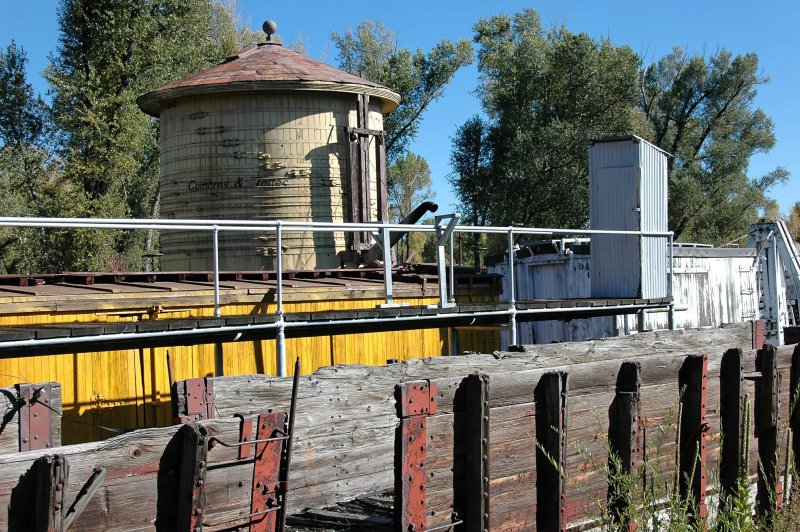
From the Friends Website:

From Panoramio.com

Posted by: Mark Valerius 7/24/2007

Posted by: John Craft 7/28/2007

Re: Chama Oil Dock

Posted:
Fri Feb 10, 2012 2:32 pmby Russ Wood
There is a small metal sided structure at the Oil Dock that housed the pump and meter for the dock.
Posted by: Dick Bell 1/30/2007
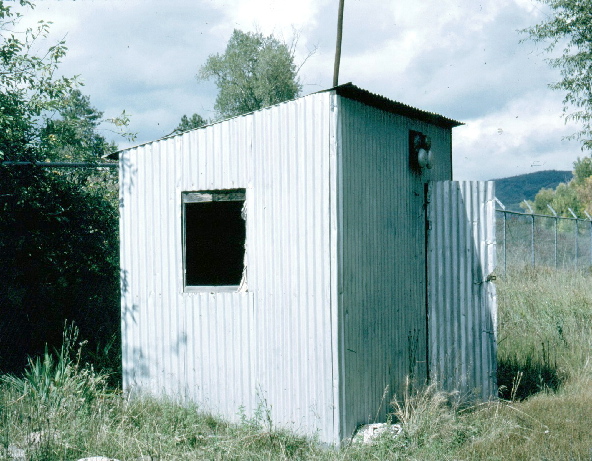
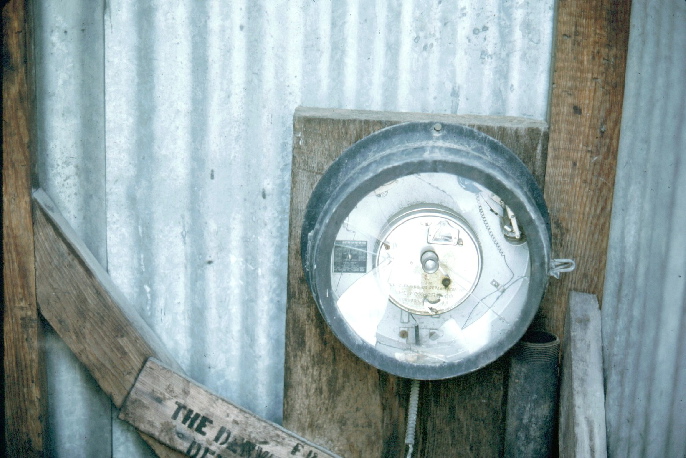
Re: Chama Oil Dock

Posted:
Sat Feb 11, 2012 6:46 amby Greg Raven
If I am remembering correctly, there is a pipeline connecting which travels some distance from Chama to an oilfield.
I would be interesting to trace its path and see if anything remains at the oilfield. I gotta believe there are capped wells and maybe some storage tanks still visible.
Greg
Re: Chama Oil Dock

Posted:
Sat Feb 11, 2012 7:03 amby John Cole
Greg, the Gramps fields were some miles away near Cromo. Rich Muth lives out there and perhaps can provide more information. According to Earl when they widened Terrace Ave the storage tanks for these racks were in the way and had to be removed. The scrapping crew almost removed the rack before the operator of the Cats asked them to save it. I will ask Terry Ross and see what he knows.
Re: Chama Oil Dock

Posted:
Sat Feb 11, 2012 7:04 amby Rich Murray
Does anyone know what the reason was for removing the 'feed pipes' from each station and just leaving the 2X4 rests?
Re: Chama Oil Dock

Posted:
Sat Feb 11, 2012 7:14 amby John Cole
I don't know, but it sure would have been better if they had been left there. Looks kinda neked without the valves and fill pipes.
Re: Chama Oil Dock

Posted:
Sat Feb 11, 2012 9:45 amby Russ Wood
Also if you look closely at the last pix with the guy on top of the railcar you will see what looks like 2x8 boards that are hinged from the rack and were used as 'walkways' to get from the rack to the top of the railcar. Betcha' those were fun in the wet weather! Russ
Re: Chama Oil Dock

Posted:
Sat Feb 11, 2012 9:50 amby John Cole
Yep, and oily no doubt as well! Falling off a tank car isn't fun......
Re: Chama Oil Dock

Posted:
Sat Feb 11, 2012 10:49 amby Rich Murray
Russ, Several years ago I made 3D images of the major Chama structures. Each of them required a lot of research and a bit of intrepretation of photos. While my original notes are buried somewhere in my files the measurements can still be accessed with the program. If you need any info, I'll be glad to get it for you. The attached photo is from a screen shot of the oil dock.
Re: Chama Oil Dock

Posted:
Sat Feb 11, 2012 12:10 pmby Russ Wood
Wow that 3d shot is just terrific!
One quickie! In the pix from the Friends site the sign is dark with white lettering, the current pix are white background with dark lettering. Question when and why the change? Thanks. Russ
Re: Chama Oil Dock

Posted:
Sat Feb 11, 2012 12:41 pmby Rich Murray
Russ, I don't know the answer to your question but, I do know that the dark background with white lettering dates at least from 1938. (Richard Dorman's Chama/Cumbres page 49) and still used in 1965 (page 29)
Re: Chama Oil Dock

Posted:
Sat Feb 11, 2012 2:44 pmby Chris Callaway
Greg Raven wrote:If I am remembering correctly, there is a pipeline connecting which travels some distance from Chama to an oilfield.
I would be interesting to trace its path and see if anything remains at the oilfield. I gotta believe there are capped wells and maybe some storage tanks still visible.
Greg
Once an individual oil well is abandoned they will remove any pipe (production tubing and casing (long string)),that is not permanently cemented (grouted) in the ground for reuse or salvage. The long sting pipe (5 1/2 inch or larger) usually has to be shot off with a jet charge or physically be backed off before it can be pulled. Then cement plugs are set in the well. Usually 200 sacks of cement per plug above the production zone and near the surface.
Sometimes when the surface owner owns the minerals and the surface land, they will not set a surface plug. They perforate the surface casing to give access to a fresh water formation that the landowner can use.
The surface casing is usually set through the water table and cemented in place and cannot be removed in most cases. This is usuallly a minimum of 200 feet to 700-800 feet from the surface. When the abandonment work is nearly done the well head is removed and the surface casing is cut off 5-6 feet below plow depth and the casing is then welded shut (capped).
There is not much left to see unless the pump jack had a concrete foundation or there are concrete foundations for the rig that drilled the well. Sludge pits or mud pits, if they existed, were filled in and recontoured after they dried out. Sometimes it took a few years or more for vegitation to reclaim the landscape.
Re: Chama Oil Dock

Posted:
Sun Feb 12, 2012 7:06 amby John Cole
200 Sacks of cement? Wow, that is some plug! I just did a pour in my back yard using 6 sack mix, so 10 cubic yards X 6 = 60 sacks of concrete. How many feet of well pipe did the 200 sacks go?
Re: Chama Oil Dock

Posted:
Sun Feb 12, 2012 9:26 amby Greg Raven
http://www.drgw.net/info/GrampsOilAccording to this the Gramps oil field continued in operation until the 1990s!
With the price of oil going up and up, maybe they will crank it up again.
Greg
Re: Chama Oil Dock

Posted:
Sun Feb 12, 2012 9:30 amby John Cole
Hi Greg, when the Friends had some old pipe delivered for the pipe train cars, the truck driver said he used to truck oil down from the Gramps field to Farmington to be refined down there. He was astonished when we showed him the rack were they used to pipe the oil to Chama to be hauled over Cumbres Pass.
Re: Chama Oil Dock

Posted:
Sun Feb 12, 2012 10:24 amby Greg Raven
There probably should be great reverence for the oil dock. It's not just an interesting industrial artifact, it's part of the confluence of events that allowed the railroad to be preserved.
Greg
Re: Chama Oil Dock

Posted:
Sun Feb 12, 2012 10:28 amby John Cole
The amazing part to me is that they stopped shipping crude in 63 and yet the R/R hung on until 69 with minimal freight business.
Re: Chama Oil Dock

Posted:
Sun Feb 12, 2012 10:57 amby Greg Raven
When was the last shipments of oil related stuff to/from Farmington? I thought they were shipping pipe out there until near the end.
Greg
Re: Chama Oil Dock

Posted:
Sun Feb 12, 2012 1:46 pmby Chris Callaway
John Cole wrote:200 Sacks of cement? Wow, that is some plug! I just did a pour in my back yard using 6 sack mix, so 10 cubic yards X 6 = 60 sacks of concrete. How many feet of well pipe did the 200 sacks go?
Oilfield cement is neat cement without aggregate. Cement weight is 94 lbs/sack or 100 lbs/ft3. The bore hole was usually drilled with a minimum of a 7 7/8 inch bit before casing was run. Bore holes were famous for washing out to a larger diameter, especially with coal seams around. The number of feet of cement height depends on the size of the hole (after the casing is removed), the volume of add water and to a degree displacement time and pump rate. Oil field cement has to be pumped, thus it has a lot more water added than concrete. Cement slurrys weight in the neightborhood of 16 pounds per gallon depending on additives. Oilfield cement is basically hydraulic Portland cement. It's properties are very dependent on the mix water.

Re: Chama Oil Dock

Posted:
Wed Feb 15, 2012 12:35 pmby Chris Callaway
Greg Raven wrote:When was the last shipments of oil related stuff to/from Farmington? I thought they were shipping pipe out there until near the end.
Greg
A lot of the pipe (casing, tubing and line pipe for pipelines) that was used in Farmington was made by CF&I at Minnequa (Pueblo). Certainly not all of it. CF&I had an advantage over the Eastern steel mills due to freight costs.
The oilfield was on its ears in the 1960s and there was not a lot of drilling going on. The demand for new pipe was minimal and the pipelines were already there. There were pipe shipments but not like the earlier boom. As the highways got better more pipe moved further by truck directly to the well site, avoiding the transload and the additional handling.
The eastern mills started eating some of the freight charges in the 1960s. In the 1970s the eastern mills sold oilfield tubular goods FOB MInnequa eating all the frieght. CF&I had some real quality issues with tubing and casing in the early 1970s. All of this combined basically put CF&I out of the oilfield pipe business during the boom in the 1970s. This was especially true for high strenth tubing and casing.










